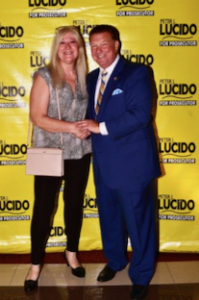 Over the last several years, a transformation of the way buildings have been designed, planned and built has been underway that goes beyond BIM (building information management),LEED (leadership in energy and environmental design) and IPD (Integrated Project Delivery). It is called Mindshift, which is an appropriate name due to the radical nature this building methodology stands traditional design, bid and build on its head.
Over the last several years, a transformation of the way buildings have been designed, planned and built has been underway that goes beyond BIM (building information management),LEED (leadership in energy and environmental design) and IPD (Integrated Project Delivery). It is called Mindshift, which is an appropriate name due to the radical nature this building methodology stands traditional design, bid and build on its head.
At the Compuware Building in Downtown Detroit, the first conference on Mindshift on the east side of Michigan was successfully held through the efforts of a sponsoring consortium formed by Turner Construction and Haworth and endorsed by the Engineering Society of Detroit, the Southeast Michigan Society for Healthcare Engineering and the U.S. Green Building Council (USGBC), Detroit Regional Chapter (DRC). Several presentations were made to over 100 attendees on the reasons why this “movement” has gained traction, recent reaction from the traditional building industry and some early success stories on buildings built with this new up front collaborative model. Let’s take a quick look at what was learned at this event downtown.
First, one of the Mindshift founders and co-authors of the Mindshift book, Bill Black, National Director Business Solutions from Haworth, explained the reasons for sparking the movement, how it grew, some of the early adopters and supporters along the way and how it is searching to go mainstream. Next, there were short presentations, including one from Bob Mauck, Vice President of Virtual Design and Construction, Ghafari Associates on how the construction industry can benefit from embracing these types of changes on building project delivery. An attorney with experience on trust based agreements, Bart Stasa, P.E., Attorney and Vice President SmithGroup, who has been involved in projects implementing the Mindshift model, spoke on how entities can jointly share risks and rewards on a project basis. One of the biggest challenges in the Mindshift model is having architects, general contractors, construction companies and subcontractors enter into mutual risk/reward agreements on the same project. The last speaker, Jennifer Garland, Strategic Operation Director for Construction and Design, Middle Tennessee Medical Center, represented an owners’ perspective on the construction of its new Hospital and the virtues of having such a large project come in on budget, on time and with relatively few change orders based on the Mindshift model.
Certainly, the single largest impediment to trying this new method of collaborative design, planning, building and commissioning is the construction industry itself. However, as was pointed out on several occasions, it’s difficult to find many using the traditional design/bid/build platform that are pleased with the present system. It was also expressed several times during the conference that while other industries have changed and adopted new systems to streamline their design/build reality (ie. aerospace, manufacturing and transportation, etc.), the building industry has been stuck in a time warp, having changed their methods very little over the last 100 years.
Other similar events of this kind have been taking place and are planned in the near future across the country. It’s hoped these conferences raise awareness of the Mindshift movement and that more decision makers in the construction industry read the book which lays out the basic steps to creating a project using this new method.
It’s time for those involved in the design, planning, and building industry to at least take a look at a new model that seems to work on projects where everyone has “bought in” to this new system. If owners have this option and are objectively presented this model by the seasoned professionals in their circle of influence, the Mindshift movement could have a transformational effect on how buildings are built in the future. As was so clearly spelled out during this conference, continuing on with the same “broken system” is certainly not in the owners’ interest, nor those stakeholders involved in our future built environment.
Click here to be introduced to the Green Agent Man
Author: Robert E. Mattler, Green Agent Man, representing GreeningDetroit.com



